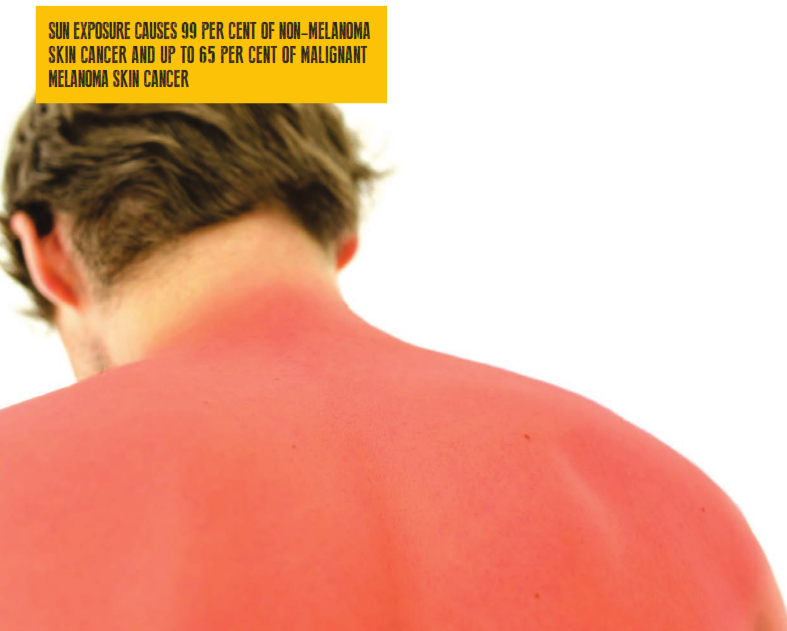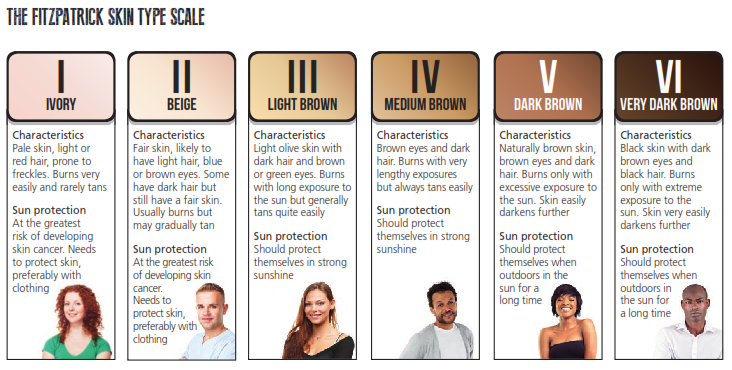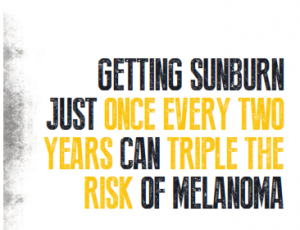Workplace Skin Cancer
2nd July 2015
Following on from their much–trumped workplace cancer campaign, The Institute of Occupational Safety & Health (IOSH) have launched their follow-up initiative that centres on solar radiation (a cause of workplace skin cancer) and carries the #IOSHsunsafe hashtag.
A total of 5% of all UK cancers are thought to be attributable to workplace activity and in the UK alone, 50 workers die each year from some form of skin cancer which is the world’s most common cancer type and which is increasing at a faster rate than anywhere else in Europe, with those working outdoors being at far great risk than those who work indoors.
Those thought to be at the highest risk include: –
- scaffolders
- construction workers
- grounds and landscape workers
- road workers
- roof workers
The skin type of individual workers is particularly important and these are shown in the image below. Skin type affects how skin reacts in the sun and how likely individuals are to develop skin cancer. Remember that skin type is genetic; it doesn’t vary according to how tanned someone is.
The simple fact that skin has changed colour after being exposed to the sun shows that it’s being damaged. Sunburn is a reaction to over-exposure of UV radiation – the top layers of skin release chemicals that make blood vessels expand and leak fluid causing swelling, pain and redness. Without protection from the sun, UV radiation starts to penetrate deep into the layers of the skin and damages skin cells, which can lead to the cell mutations associated with cancer.
What You Need to do
Skin cancer is avoidable. Tackling solar radiation exposure is relatively easy to achieve, and doesn’t have to be costly. It can be started by simply assessing the risks of exposure: –
- do any employees work regularly outside?
- are workers exposed to higher levels of solar radiation for significant periods?
- do workers cover up, or are they permitted to work with large areas of exposed skin?
Remember that even on cloudy days there can be enough radiation to damage the skin – 30–40 % of UV rays can penetrate overcast skies, and up to 80 per cent gets through sky half covered in clouds. The strength of solar UV radiation isn’t connected to temperature and can bounce off reflective surfaces like metal, water, snow and some concrete finishes.
Control Measures
Once you have established whether there is a risk, there is a whole raft of control measures you could consider. Here are some of the most common: –
- checking the UV index from the weather forecast, and communicating information to relevant workers, alongside prompts to use protective measures to minimise exposure
- using heavy duty cover or shade when working outdoors in the sun – shade can cut UV exposure by 50 per cent or more
- ensuring rest breaks are taken in shaded areas or indoors
- raise awareness of solar radiation issues with workers, using toolbox talks or training sessions, perhaps by using a resource like IOSH’s free ‘Sun Safety in Construction’ film
- ensuring workers cover up wearing long-sleeved, loose-fitting tops and trousers when working outdoors during months with high UV levels
- using high factor sunscreen where the skin can’t be protected by other measures, for example, on the hands, face and lips. Sunscreen should be water-resistant and have ‘broad spectrum’ protection, with a sun protection factor (SPF) of at least 30 and a UVA rating of four or five stars
- encouraging workers to check their skin for changes to moles or other changes. Detecting the early signs of skin cancer and undergoing early treatment can save lives
The IOSH #NoTimetoLose solar safety campaign page contains lots of very useful information that will help you protect workers.
Simian clients are free to contact their Account Manager for further assistance, if required. Call 0345 602 2418 (Option 1)


